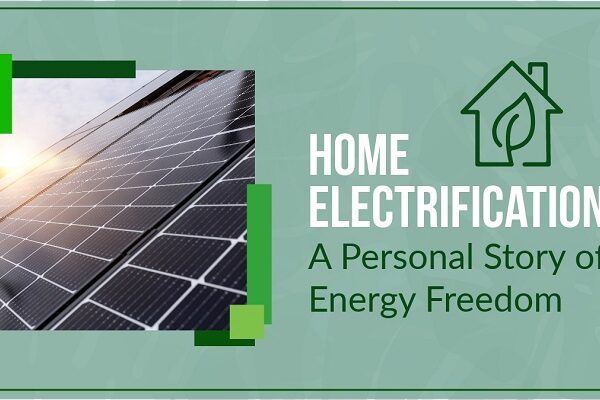By Robin Kristufek, guest writer
Let’s be real.
All solar, wind, and other renewable technologies have significant greenhouse gas (GHG) and toxic footprints. Mining, production, transport, recycling, and disposal of the materials needed to create renewable energies releases numerous GHGs and toxins into the air above and into waters and soils downstream.
Let’s admit it: converting to renewable energy technologies will not bring a return to 350 ppm, and will not protect the water, soil, and air of people living nearby their production. Sure, a conversion to renewable energies will delay climate disaster, since their GHG footprints are lower than those of fossil fuels; but a conversion to renewables will not prevent climate or toxic disaster. Renewables are not clean, and the huge effort to convert to their use will actually bring us further away from our goal of a return to 350 ppm CO2, not closer to that goal.
Here’s the facts.
Greenhouse gases created during production of solar cells:
Hexaflouroethane (C2F6), nitrogen triflouride (NF3), and sulfur hexaflouride (SF6) are gruesome greenhouse gases that make CO2 seem harmless.
C2F6
- 12,000 times more potent than CO2
- 100% manufactured by humans
- stays in the atmosphere for much longer than CO2 does
NF3
- 7,000 times more virulent than CO2
SF6
- 25,000 times more potent than CO2
Cement/concrete needed:
To stabilize wind turbines, huge amounts of cement/concrete are needed at their base. As we know, cement production has a huge carbon footprint and there is no way around that.
Massive amounts of batteries needed:
Since the sun and wind are not always present, batteries will be needed to store energy for cloudy, non-windy days and nights if we convert to all “renewables.”
As we all know, batteries are extremely toxic, poisoning water and soil around their production and disposal sites. There is no way to contain these toxins indefinitely; all containers break down with time.
Partial list of toxic chemicals and minerals put into our air, water, and/or soil during the mining, production, and disposal of so-called “green energy” technologies:
Silicon tetrachloride, sodium hydroxide, potassium hydroxide, trichloroethane, phosphorus oxychloride, ethyl vinyl acetate, silicon trioxide, stannic chloride, tantalum pentoxide, hexavalent chromium, silane (a highly explosive gas), lead, cadmium, mercury, arsenic.
Do we really want to add these chemicals to our drinking water, air, and soil?
Don’t we want to be water protectors?
Loss of precious carbon sequestration areas:
I know people in the foothills who cut down ¼ acre of trees and covered up another ¼ acre of farmland to install the solar array needed to power their farm. You see many examples of this as you travel our great valley and hills.
Every square inch of land covered by a solar panel is covering precious land that could be growing carbon-sequestering plants.
Sure, you can grow some plants between and under solar panels, but not nearly the amount you can grow without the panels there, and not the very deep rooted plants that sequester carbon in large amounts.
Scale / pure numbers needed:
We have 7 billion people on this planet already.
If each family and workplace has air conditioning, heating, lighting, refrigerators, electric vehicles, numerous electronics, and cleaning and gardening technologies like vacuums etc.; if each family also has a washing machine, dryer, electric cooking, kitchen gadgets, TVs, etc.; and if each factory also has large machines running to make their products – we will need billions of solar panels and wind generators.
The pure numbers of renewable technologies we need to create and maintain our western lifestyle here, and create it in “undeveloped” areas, is staggering.
Facing Reality
It’s pure fantasy to think that converting to renewable energies will bring our CO2 levels down to 350 ppm.
Yes, converting to renewables will slow atmospheric CO2’s rise, but such a conversion will not bring CO2 down; such a conversion would continue to cause a rise in CO2, other GHG, and toxins.
Isn’t our goal to get back down to 350 so that our great-grandchildren will survive? If so, we need to change our main thrust away from conversion to renewable, so-called “clean” energies, and instead focus on things that will actually bring us back down to 350.
What can we do instead, to get our CO2 back down to 350 ppm?
Instead of focusing our efforts on building billions of solar panels and wind turbines, instead we should focus on things that will stop any GHG and toxic output, and on things that actually sequester carbon:
- Drastically reduce consumption of new material goods to just those things we truly need (food, clothing, shelter).
- Stop all activities that require extraction of elements from the earth.
- Learn again to make things without needing to extract from the earth or disrupt the pre-industrial, pre-agricultural carbon cycle in any way, and learn again to repair / repurpose existing items.
- Greatly increase sequestration of carbon with restorative agriculture, reforestation, restoring native grasslands.
- Completely change our economy so that it is based on satisfying true human needs: food, clothing, and shelter, instead of being an economy that creates “wealth” for a few and is based on consumption of goods we don’t actually need. We need instead a system where land and wealth are shared equally among us all; so that no one ever has to trade their work in to destroy ecosystems, to obtain food and shelter, because they don’t have access to land to get food and shelter for themselves. Obviously this kind of system is not achievable in our lifetimes, but working towards it is imperative.
You may say these goals are ridiculous, cannot happen. But how else can we stop the massive destruction of our land, water, and air, except by changing the system that forces people to participate in destruction, so they trade their labor for food and shelter?
MATH
This year CO2 reached 407 ppm and is rising at 3 ppm / year.
Business as usual/continuing with fossil fuels:
- (3 ppm per year rise) X (84 more years this century) = 252 ppm rise by year 2100
- 407ppm + 252 ppm = 659 ppm CO2 by year 2100
- 659 ppm + 300 ppm for another century = 959 ppm CO2 by year 2200
Of course, this could be even more considering population growth and “development” in the poorer areas of this earth.
Converting to all renewables:
- (1 ppm per year rise) X (84 more years in this century) = 84 ppm rise by year 2100
- 407 ppm + 84 ppm = 491 ppm CO2 by year 2100
- 491 ppm + 100 ppm rise for another century = 591 ppm by year 2200
STILL NO WHERE NEAR THE 350 PPM WE NEED TO ACHIEVE!
So let’s focus on bringing CO2, other GHG, and toxin levels down, rather than focusing on efforts that will continue to raise their levels.



Comments(2)
Jordan Perry says:
April 22, 2017 at 3:21 pmWell said and correct. I learned the hard way through activism to beware of those selling circular solutions. It’s too easy to trust the “expert” on your side with quick soundbites about solar, wind, hydro, nuclear. Here’s what I’d want….instead of trusting, get dirty with research, or better yet, try and live it. Try growing organic food without going to the store for sexy soil and sweet seeds. Try and shrink your carbon footprint without major lifestyle sacrifices. My wife and I are lucky to know Robin. She’s done and is doing the hard work to learn. For us, doing that and having the debates that come from it drove us away from activism and activists, including 350 sac. It’s the convo people don’t want to have. I met a lady at a 350 event. I said, well, we’re sort of the we’re on the titanic crowd. She blinked once, looked back and said: “I have grandchildren, I can’t be on the Titanic.” Gulp. Our family and farm are in a new documentary streaming on Amazon called Innocently Violent. It’s about food, climate, population, and what sustainability means……check it out. And…..great work, Robin. Happy to be on the Titanic with you!
Richard Lentz says:
August 4, 2017 at 2:26 pmVery interesting, Robin. Thank you for running the numbers, and providing such detail; the real story behind the story.
Readers who like what Robin wrote might also want to check out the Think Resilience movement. Learn more about it at http://www.postcarbon.org. It’s about creating resilient communities for our changing future. Richard Heinberg, author of an awesome piece of work Our Renewable Future, plays a major role.
Also check out his book, because it delves into the realities of transitioning to a fossil-free future. He provides detailed analyses of energy: its sources, generation, distribution, and ultimate transition. He admits there will have to be enormous changes in our way of life. So it makes sense, to me, that he would next take on something like Think Resilience. It’s about taking action within our communities to begin that transformation to a way of life and economy that is sustainable.
Again, thank you Robin for taking a critical look at our assumptions, and sharing the facts.